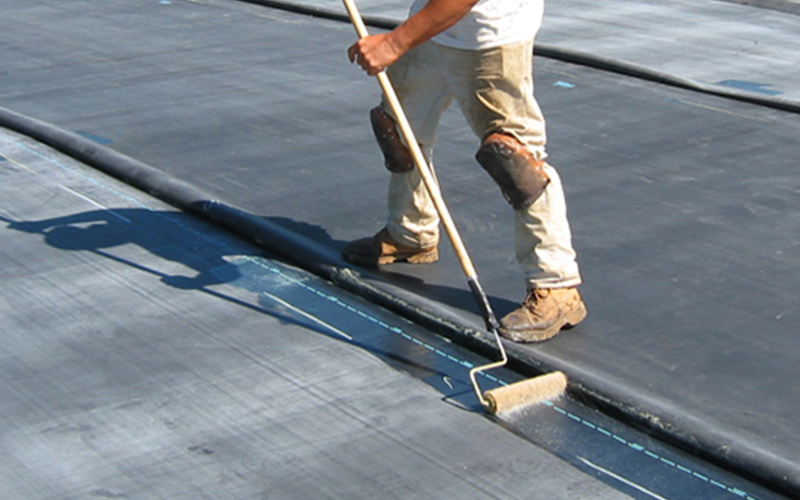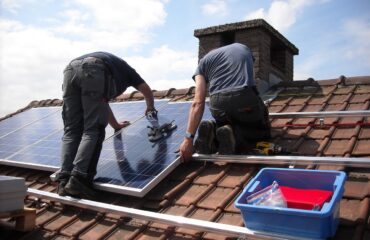If you’re considering roofing options, you’ll want to know the difference between felt and synthetic underlayment.
Both have pros and cons, and making an informed decision is essential. In this article, our seasoned roofers will break down the composition, durability, installation process, and cost comparison of these two types of underlayment.
By the end, you’ll clearly understand which option best suits your roofing needs. So, let’s dive in and explore the world of felt versus synthetic underlayment.
Composition
You may wonder about their composition when choosing between felt and synthetic underlayment.
Felt underlayment is made from organic materials such as recycled textiles, wood fibers, and asphalt.
Due to its organic composition, it is more prone to mold and mildew growth. Felt underlayment is also more susceptible to moisture absorption, leading to structural damage if improperly installed or maintained.
On the other hand, synthetic underlayment is made from materials like polyethylene or polypropylene. This composition offers advantages such as shielding your home from potential water damage and UV resistance. Synthetic underlayment is also lightweight and easy to install.
Overall, understanding the composition of felt and synthetic underlayment can help you make an informed decision based on the advantages and disadvantages of each.
Durability
To assess the durability of felt and synthetic underlayment, consider their resistance to tearing, puncturing, and other potential damages.
When comparing their longevity, synthetic underlayment tends to have a longer lifespan than felt underlayment. This is due to the synthetic material’s ability to withstand harsh weather conditions, UV radiation, and moisture.
Synthetic underlayment is typically made from polypropylene or polyester, which offers superior strength and resistance against tearing and puncturing.
Additionally, synthetic underlayment is often reinforced with fiberglass or other materials to enhance its durability further.
On the other hand, felt underlayment is more susceptible to tearing and puncturing, especially if exposed to heavy winds or sharp objects.
Therefore, synthetic underlayment emerges as the more durable option when conducting a strength assessment.
Ease of Installation
The ease of installation for felt or synthetic underlayment can depend on various factors, including the specific product, your familiarity with the material, and any additional features that may be present.
However, here are some general considerations:
Felt Underlayment
Material Characteristics: Felt underlayment is typically more rigid than synthetic underlayment. It may be less forgiving when conforming to the roof contours.
Weight: Felt underlayment is usually heavier than synthetic alternatives. Handling and positioning larger rolls of felt may require more effort.
Fastening: Felt is typically fastened to the roof deck using staples or nails. The installation involves rolling out the material, cutting it to fit, and securing it in place.
Synthetic Underlayment
Material Characteristics: Synthetic underlayment is often lighter and more flexible. This flexibility can make working easier, especially when dealing with complex roof geometries.
Self-Adhesive Strips: Some synthetic underlayments come with self-adhesive strips, which can simplify the installation process. These strips help bond adjacent underlayment rows, reducing the need for additional fasteners.
Ease of Cutting: Synthetic underlayment is often easier to cut than felt. The material may be less prone to tearing during the cutting process.
Roll Size: Synthetic underlayment rolls are often larger than felt rolls. This can reduce the number of seams and make the installation process more efficient.
Best Practices To Follow For Underlayment Installation
When it comes to installing underlayment, there are some common mistakes to avoid and best practices to follow:
- Clean the surface, remove any debris, and ensure it is dry.
- Overlap the underlayment sheets by at least six inches.
- Secure the underlayment using nails or staples to prevent it from shifting during installation.
Cost Comparison
You can consider various factors to compare the costs of felt and synthetic underlayment. When it comes to cost, synthetic underlayment is generally more expensive upfront compared to felt.
However, it offers long-term savings due to its durability and resistance to weather conditions. Synthetic underlayment can last up to 50 years, whereas felt typically lasts around 20 years. This means that with synthetic underlayment, you will have to spend money on replacements less frequently.
Therefore, considering both long-term savings and environmental impact, synthetic underlayment proves to be a cost-effective and sustainable choice.





